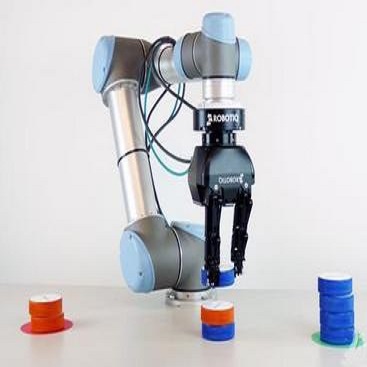Purpose: Robotic assistance in otologic surgery can reduce the task load of operating surgeons during the removal of bone around the critical structures in the lateral skull base. However, safe deployment into the anatomical passageways necessitates the development of advanced sensing capabilities to actively limit the interaction forces between the surgical tools and critical anatomy. Methods: We introduce a surgical drill equipped with a force sensor that is capable of measuring accurate tool-tissue interaction forces to enable force control and feedback to surgeons. The design, calibration and validation of the force-sensing surgical drill mounted on a cooperatively controlled surgical robot are described in this work. Results: The force measurements on the tip of the surgical drill are validated with raw-egg drilling experiments, where a force sensor mounted below the egg serves as ground truth. The average root mean square error (RMSE) for points and path drilling experiments are 41.7 (pm 12.2) mN and 48.3 (pm 13.7) mN respectively. Conclusions: The force-sensing prototype measures forces with sub-millinewton resolution and the results demonstrate that the calibrated force-sensing drill generates accurate force measurements with minimal error compared to the measured drill forces. The development of such sensing capabilities is crucial for the safe use of robotic systems in a clinical context.
翻译:目的:在耳科手术中,机器人辅助可以减轻手术医生在去除颅底侧部关键解剖结构周围的骨骼时的任务负担。但是,安全进入解剖通道需要开发先进的传感能力,以主动限制手术工具和关键解剖结构之间的交互力量。 方法:我们介绍一种手术钻,该钻具备力传感器,能够测量精确的工具组织交互力,以实现对手术医生的力控制和反馈。本文描述了安装在协作控制外科机器人上的力传感手术钻的设计、校准和验证。结果:通过生鸡蛋钻孔实验证实了手术钻尖端的力量测量。在该实验中,位于蛋底下的力传感器作为基本真相。点和路径钻孔实验的平均均方根误差(RMSE)分别为41.7(pm 12.2)mN和48.3(pm 13.7)mN。 结论:力传感器测量原型具有次毫牛顿的分辨率,并且结果表明,校准的力传感钻产生准确的力量测量,与测量的钻孔力相比误差最小。开发这种传感能力对于在临床环境中安全使用机器人系统至关重要。



